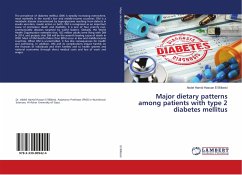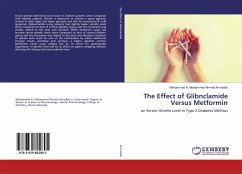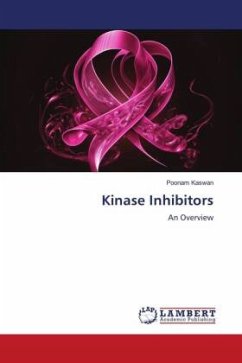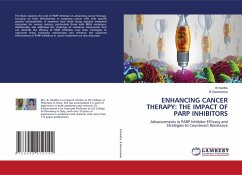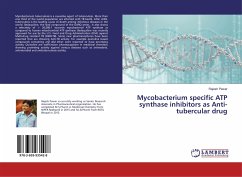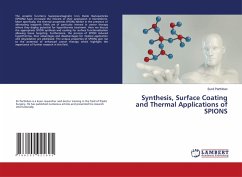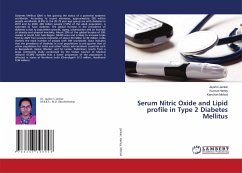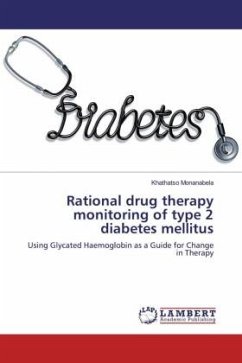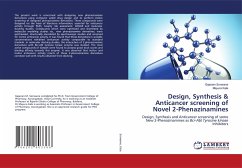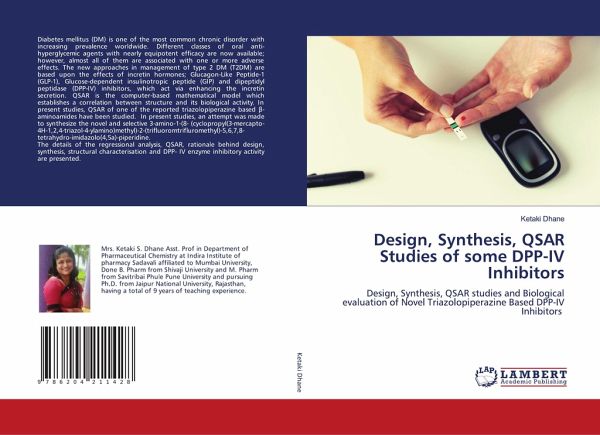
Design, Synthesis, QSAR Studies of some DPP-IV Inhibitors
Design, Synthesis, QSAR studies and Biological evaluation of Novel Triazolopiperazine Based DPP-IV Inhibitors
Versandkostenfrei!
Versandfertig in 6-10 Tagen
36,99 €
inkl. MwSt.

PAYBACK Punkte
18 °P sammeln!
Diabetes mellitus (DM) is one of the most common chronic disorder with increasing prevalence worldwide. Different classes of oral anti-hyperglycemic agents with nearly equipotent efficacy are now available; however, almost all of them are associated with one or more adverse effects. The new approaches in management of type 2 DM (T2DM) are based upon the effects of incretin hormones; Glucagon-Like Peptide-1 (GLP-1), Glucose-dependent insulinotropic peptide (GIP) and dipeptidyl peptidase (DPP-IV) inhibitors, which act via enhancing the incretin secretion. QSAR is the computer-based mathematical ...
Diabetes mellitus (DM) is one of the most common chronic disorder with increasing prevalence worldwide. Different classes of oral anti-hyperglycemic agents with nearly equipotent efficacy are now available; however, almost all of them are associated with one or more adverse effects. The new approaches in management of type 2 DM (T2DM) are based upon the effects of incretin hormones; Glucagon-Like Peptide-1 (GLP-1), Glucose-dependent insulinotropic peptide (GIP) and dipeptidyl peptidase (DPP-IV) inhibitors, which act via enhancing the incretin secretion. QSAR is the computer-based mathematical model which establishes a correlation between structure and its biological activity. In present studies, QSAR of one of the reported triazolopiperazine based beta-aminoamides have been studied. In present studies, an attempt was made to synthesize the novel and selective 3-amino-1-(8- (cyclopropyl(3-mercapto-4H-1,2,4-triazol-4-ylamino)methyl)-2-(trifluoromtrifluromethyl)-5,6,7,8-tetrahydro-imidazolo(4,5a)-piperidine.The details of the regressional analysis, QSAR, rationale behind design, synthesis, structural characterisation and DPP- IV enzyme inhibitory activity are presented.



